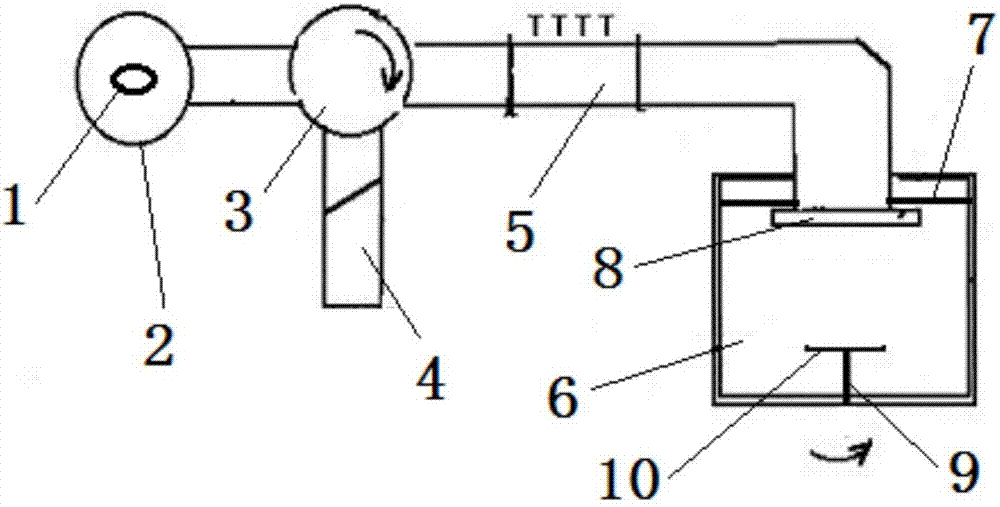Preparation method of ceramic viscose cut-off tool
A viscose fiber and cutting knife technology, used in metal processing and other directions, can solve the problems of competition between metals and their composite materials, poor performance reliability, and high dispersion of ceramic material properties, and meet the requirements of ensuring molding uniformity and compactness. , Improve the yield and reliability of finished products, the effect of high embryo density and strength
- Summary
- Abstract
- Description
- Claims
- Application Information
AI Technical Summary
Problems solved by technology
Method used
Image
Examples
Embodiment 1
[0019] The technical process of the preparation method of the ceramic viscose fiber cutting knife prepared in this embodiment includes three steps of slurry preparation, green body molding and microwave sintering:
[0020] (1) Preparation of slurry: mix acrylamide monomer with N, N'methylenebisacrylamide at a mass ratio of 17:1 to prepare a mixture, and then mix the mixture with water at a mass ratio of 18:85 Prepare the pre-preparation solution by mixing, add 0.5% by mass of dispersant and powdery 3Y-TZP with a purity greater than 99% and a particle size of less than 20nm in the pre-preparation solution to prepare a pH value of 9.5 and a solid phase volume fraction greater than 50% suspension, the suspension is pulverized by a ball mill for 10 hours to obtain a water system ceramic slurry with a viscosity less than 200mPa.S, the mass percentage of the mixture in the water system ceramic slurry is 3%, and the preparation of the slurry is completed;
[0021] (2), green body mol...
PUM
| Property | Measurement | Unit |
|---|---|---|
| particle size | aaaaa | aaaaa |
| density | aaaaa | aaaaa |
| hardness | aaaaa | aaaaa |
Abstract
Description
Claims
Application Information
 Login to View More
Login to View More - R&D
- Intellectual Property
- Life Sciences
- Materials
- Tech Scout
- Unparalleled Data Quality
- Higher Quality Content
- 60% Fewer Hallucinations
Browse by: Latest US Patents, China's latest patents, Technical Efficacy Thesaurus, Application Domain, Technology Topic, Popular Technical Reports.
© 2025 PatSnap. All rights reserved.Legal|Privacy policy|Modern Slavery Act Transparency Statement|Sitemap|About US| Contact US: help@patsnap.com



